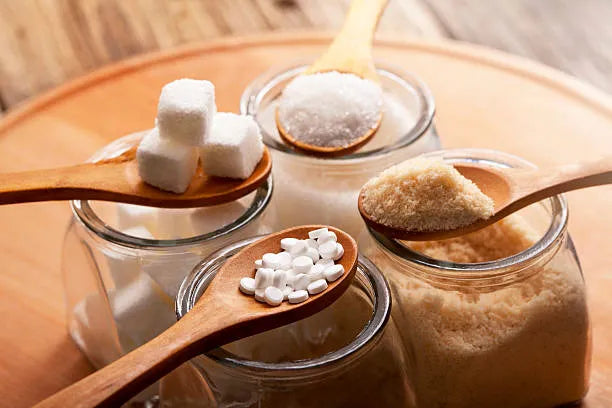
The Hidden Sugars in Everyday Foods: What You Need to Know
Share
Sugar is everywhere. It’s in the desserts we indulge in, the sodas we sip, and even the morning pastries we reach for. But what many of us fail to realize is that sugar is lurking in places we’d least expect. Hidden sugars — those added during food processing or disguised under unrecognizable names — are a major contributor to the overconsumption of sugar in modern diets.
How Much Sugar Is Too Much?
The World Health Organization (WHO) recommends that free sugars (those added to foods or naturally present in honey, syrups, and fruit juices) make up less than 10% of our daily calorie intake. For an average adult, that’s about 50 grams of sugar — or roughly 12 teaspoons — a day. Lowering it to 5% provides even greater health benefits. Unfortunately, many people exceed these limits without even realizing it.
Where Is All This Sugar Hiding?
1. Breakfast Cereals and Granola Bars
These staples of the morning routine often seem like healthy choices, marketed as “high in fiber” or “low-fat.” However, many breakfast cereals and granola bars are loaded with added sugars. For instance, a single serving of flavored cereal can contain up to 20 grams of sugar, nearly half the daily recommended intake.
Pro Tip: Opt for unsweetened cereals or make your own granola at home with natural sweeteners like a touch of honey or dried fruit.
2. Yogurt
Yogurt is often seen as a health food, but flavored and fruit-on-the-bottom varieties can be sugar bombs. A single container of strawberry yogurt can pack as much as 15–20 grams of sugar. Even “low-fat” options often compensate for the fat reduction by adding more sugar for flavor.
Pro Tip: Choose plain, unsweetened yogurt and add fresh fruit for natural sweetness.
3. Condiments and Sauces
Ketchup, barbecue sauce, salad dressings, and even pasta sauces are loaded with hidden sugars. For example, just two tablespoons of ketchup can contain 4 grams of sugar, equivalent to one teaspoon.
Pro Tip: Look for sauces labeled “no added sugar” or experiment with making your own at home using whole ingredients.
4. Packaged Snacks and “Health” Bars
Snacks marketed as healthy — like protein bars, dried fruits, or trail mixes — can be deceptive. Many protein bars contain as much sugar as a candy bar, while dried fruits are often coated with sugar to enhance flavor.
Pro Tip: Read ingredient labels and choose whole, unprocessed snacks like raw nuts or fresh fruit.
Why Does It Matter?
Hidden sugars contribute to a variety of health issues, from weight gain to chronic illnesses. Here’s how:
- Increased Risk of Diabetes: Excess sugar consumption can lead to insulin resistance, a precursor to Type 2 diabetes.
- Heart Disease: Studies have linked high sugar intake to an increased risk of cardiovascular disease.
- Obesity: Sugary foods are calorie-dense and can lead to overconsumption, contributing to weight gain.
- Tooth Decay: Sugars feed the bacteria in our mouths, leading to cavities and gum disease.
Steps to Reduce Your Sugar Intake
- Cook at Home: Preparing meals from scratch allows you to control what goes into your food.
- Read Labels: Pay attention to ingredient lists and sugar content, even for savory products.
- Drink Smarter: Replace sugary sodas, juices, and energy drinks with water, herbal teas, or sparkling water.
- Retrain Your Taste Buds: Gradually reduce your sugar consumption to allow your palate to adjust to less sweetness.
Hidden sugars in everyday foods can easily sabotage even the healthiest diets. By becoming aware of where these sugars hide and making informed choices, you can significantly reduce your sugar intake and improve your overall health. Small, mindful changes today can lead to a healthier, sweeter future — without all the added sugar.
Get more knowledge about eating healthy, please refer to Diabetes-Friendly Meal Plans.
